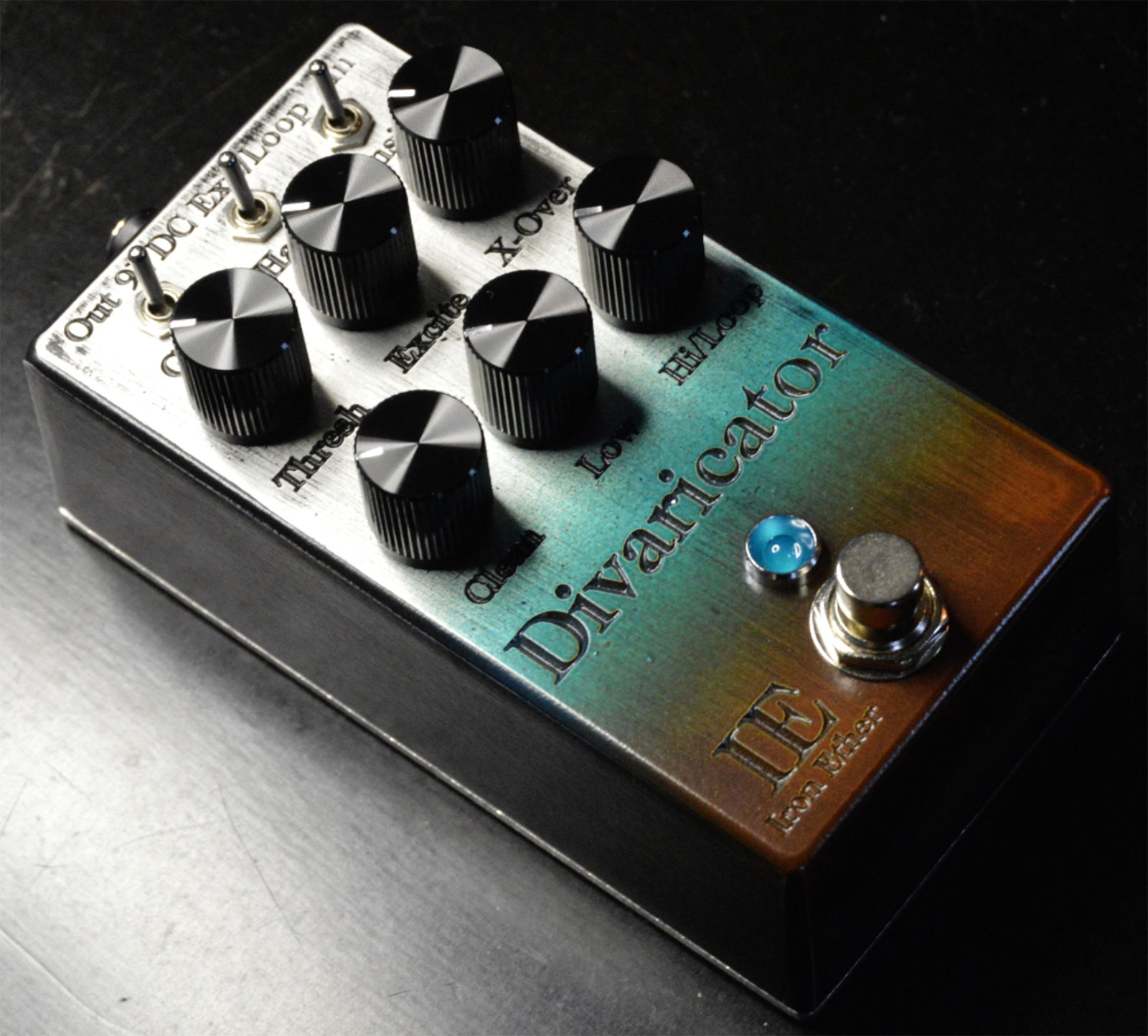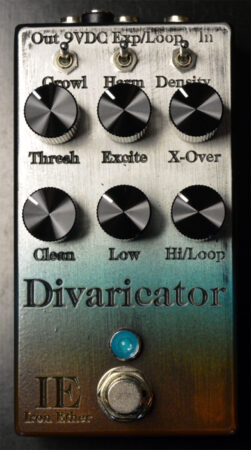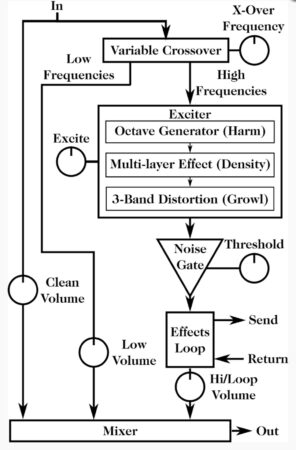DIVARICATOR
Crossover/Exciter
The Divaricator is a versatile “tone toolbox” for bassists using effects. Using its 4th-order variable crossover, the pedal splits a signal into high and low frequency bands, and processes the high frequency band with any combination of three “exciters” - each enhancing a different aspect of the sound – before sending this enhanced harmonic content through an external effects loop. To tame the potential for enhancing high frequency noise along with the signal, a noise gate is applied to the excited signal path. The low frequencies are passed through directly, to preserve the bass frequencies without introducing muddiness, booming, or cancellation.
Depending on how it's connected to other equipment, the Divaricator can be used as an inline effect to enhance the signal, sculpt tone and generate extra harmonics; to split low frequencies to a bass amp and highs to a guitar amp; or to insert other effects into your chain that would normally cut bass or otherwise alter your tone.
The Divaricator is designed in collaboration with engineer Don Stavely.

DIVARICATOR - CONTROLS
Threshold: Sets the level of the incoming signal at which the noise gate is engaged. This can also be used to dynamically control the effects loop level.
Excite: Controls the amount or strength of excitation, from none to extreme. All three exciters are controlled by this single knob. With all exciters turned off, this knob adds resonance to the crossover filter.
X-Over: Controls the crossover frequency of the band-split filter, separating the low and high signal paths. Covers the range 100 Hz to 600 Hz.
Clean: Controls the level of the clean signal.
Low: Controls the level of the low frequencies, which are passed to the output without further processing.
Hi/Loop: Controls the level of the high frequencies, which are processed by the exciter and optionally routed through the external effects loop.
Exciters
Growl: A distortion-like exciter which generates extra harmonics. Unlike conventional distortion, this effect preserves playing dynamics exactly, rather than adding compression. This effect is great for adding harmonics before filters and phasers, particularly with bass/string combinations that have a dark tone with few harmonics.
Harm: Generates octave-up harmonies. This can be used as an effect on its own, but subtler and more interesting results come when turning the X-Over frequency up above center. You'll be generating octaves only from the higher harmonics in your sound, which creates unique, exaggerated pick attack sounds and shimmer.
Density: A “multi-layer” enhancement effect which thickens the sound. This is similar to a reverb, but maintains the rhythmic tightness of your playing.
DIVARICATOR - SPECIFICATIONS
Low-noise, low-distortion active components chosen for excellent audio fidelity.
Measures 4.7″ x 2.5″ (12cm x 6.3cm).
Runs on industry-standard 9 volt DC center-negative power supply. 85mA current draw.
All jacks are located at the top of the pedal to save pedalboard space.
Learn more about the construction of IE pedals here.
MULTI-FUNCTION JACK
The "Exp/Loop" jack can be used in several ways:
Effects Loop: Using an "insert" cable, this jack functions as an effects loop for the high frequency band.
Expression pedal: Connecting an expression pedal to this jack allows for expression control over the level of the high frequency band. In this setup, the Hi/Loop knob acts as a maximum level limiter for the high band.
Frequency splitter: Using an insert cable, this jack can be used to split high frequencies and low frequencies to different signal chains or amps. Generate distorted upper octaves and send them to a guitar amp, while your low frequencies continue to your bass amp. The bypass switch now bypasses your guitar chain, so you can turn it on to fill up space when the guitarist solos, for example.
SOUND CLIPS
All clips by Marc Sterling


